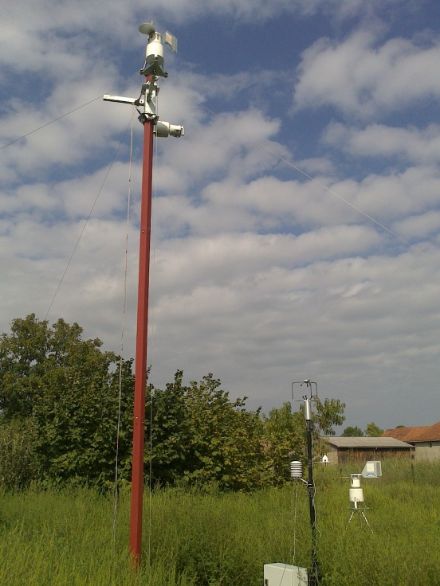Service Navigation
Search
Airborne pollen represent a major allergy risk to the population. It can cause severe hay fever and can even lead to asthma. Hence, allergies caused by Ambrosia pollen have a large impact on the economy and quality of life wherever Ambrosia occurs. Hotspots of Ambrosia occurrence in Europe include Serbia and Hungary, but also the French Rhone valley, northern Italy and to a less extent the Swiss cantons of Ticino and Geneva.
Numerical pollen dispersion models such as implemented in the pollen module of COSMO-ART can help to manage the symptoms of allergy suffers. However, knowledge about the link between Ambrosia pollen emission and the weather is paramount to run COSMO-ART. The project POLEMIC (Identification of key factors governing Ambrosia pollen emission by field experiments and their implementation in the numerical pollen dispersion model COSMO-ART) will provide this knowledge to improve Ambrosia pollen forecasts. It is funded by SNF (Swiss National Science Foundation) under the programme SCOPES (Scientific co-operation between Eastern Europe and Switzerland).
Goals of POLEMIC
The overall objective of the project is to contribute to our understanding of allergenic pollen emission. More specifically, the project will deliver a mechanistic description of the Ambrosia pollen emission that will be implemented in COSMO-ART. These goals will be achieved by simultaneous pollen and meteorological measurements (Figure 1) and subsequent data analysis and test runs using COSMO-ART.

The Pannonian Plain in Serbia was chosen as the study region because Ambrosia is abundant there. A further important aim is know-how transfer to the Eastern European partner regarding numerical dispersion modelling, analysis of large amounts of data and statistical methods. This is achieved during regular joint project meetings.
Schedule of the project
Three measurement campaigns are planned. The first one took place during the 2014 Ambrosia pollen season (July-September). That campaign was used to test this novel approach to simultaneously measure pollen concentrations and meteorological variables at high temporal resolutions. Adaptations of the measurement setup took place for the 2015 season. Results will be available once the 2016 pollen season has been analysed.
The measurement campaigns are managed by the Serbian partner, while the Swiss partner is responsible for the data analysis and the implementation of the results into COSMO-ART. The project results will be communicated in joint peer-reviewed publications.